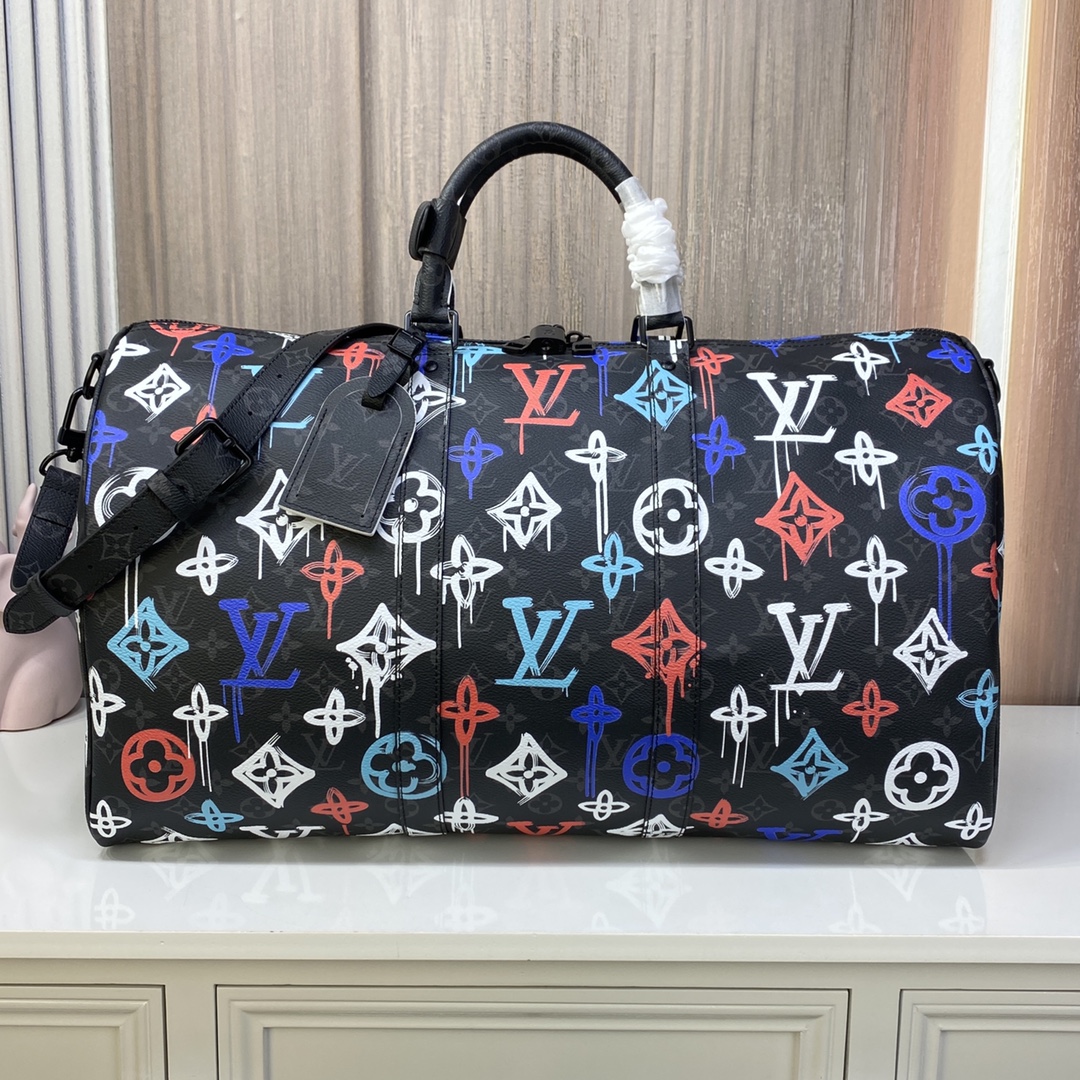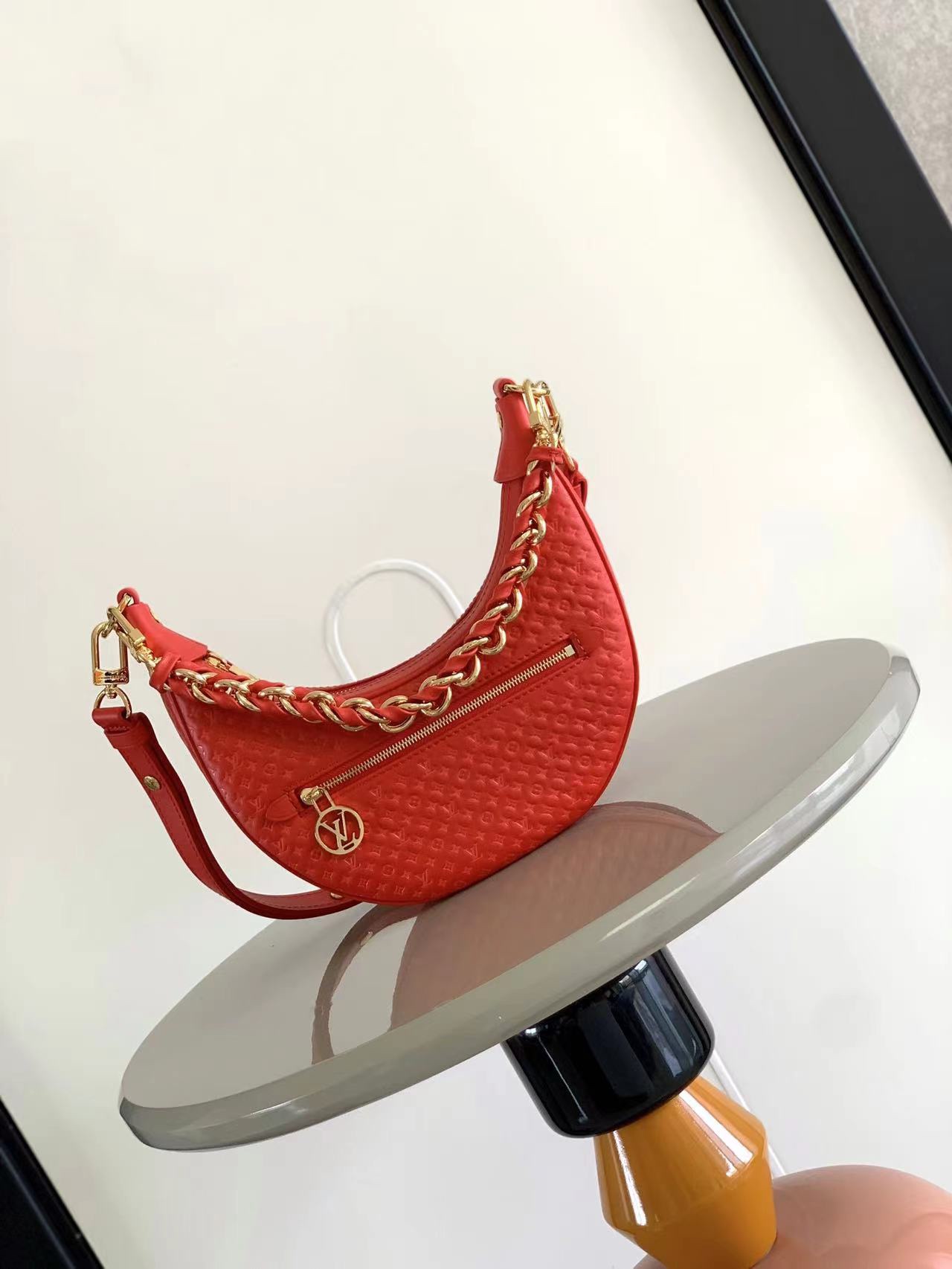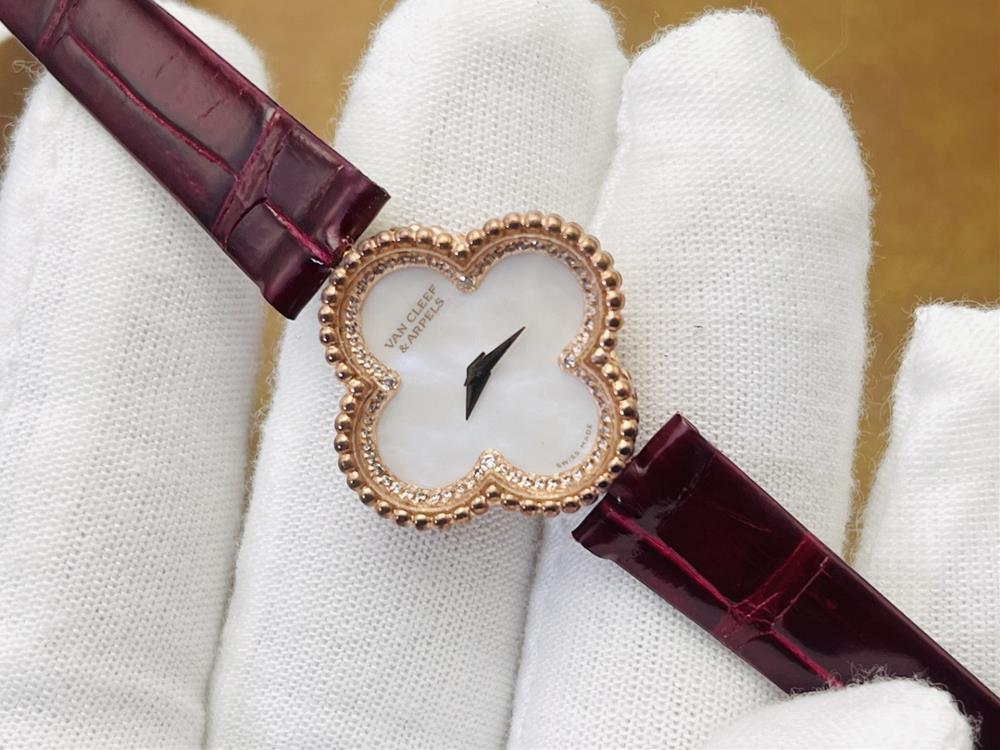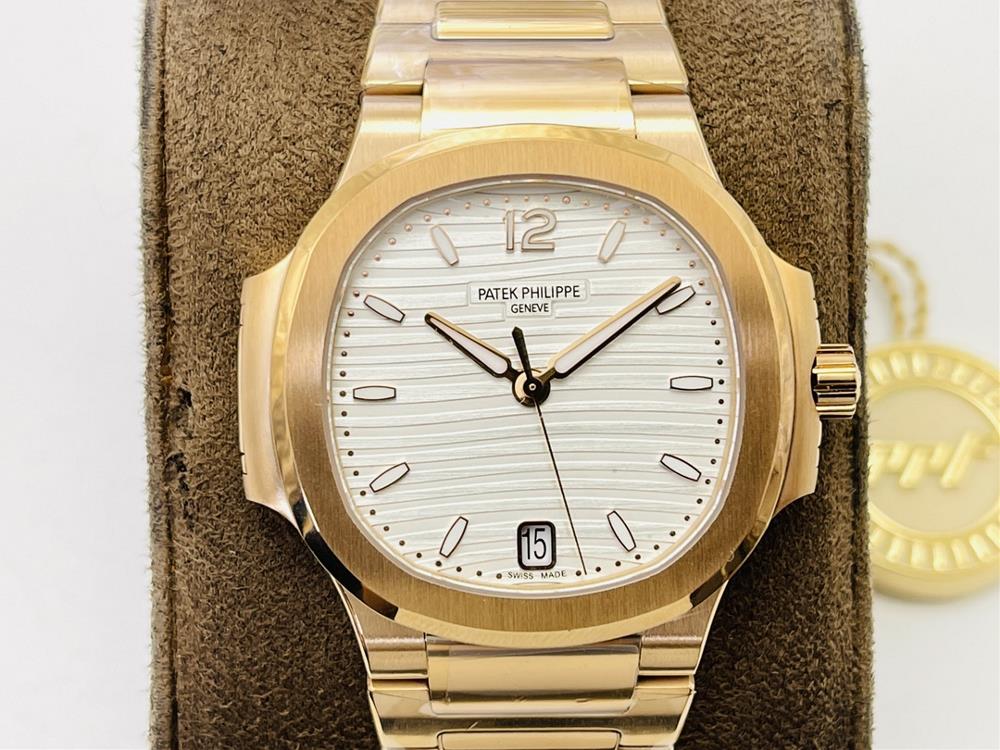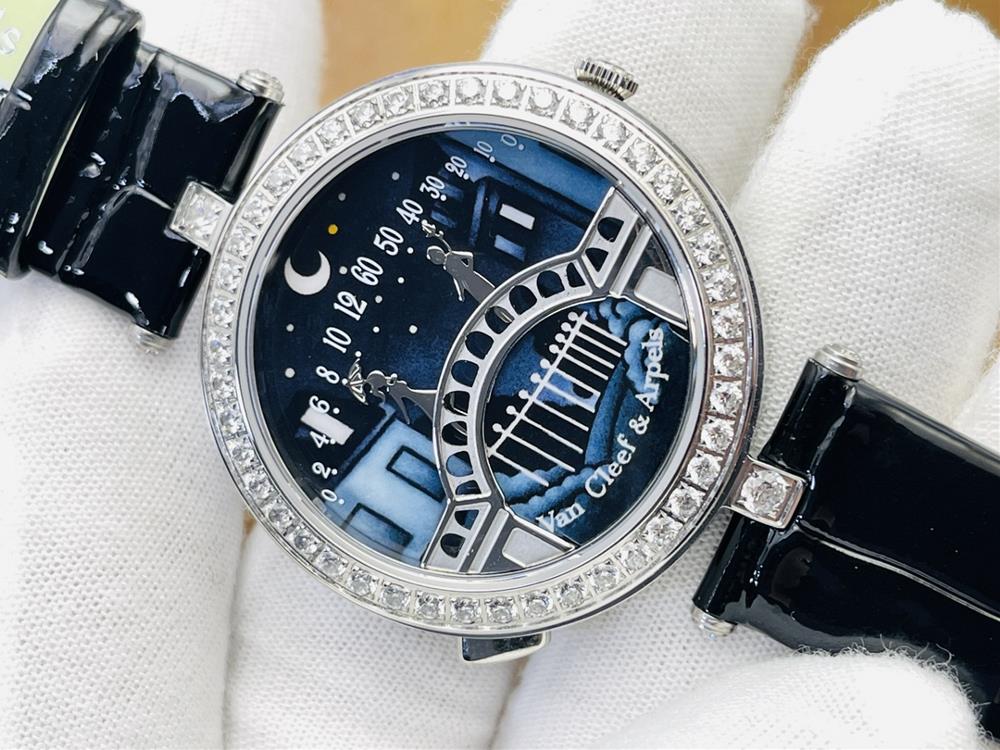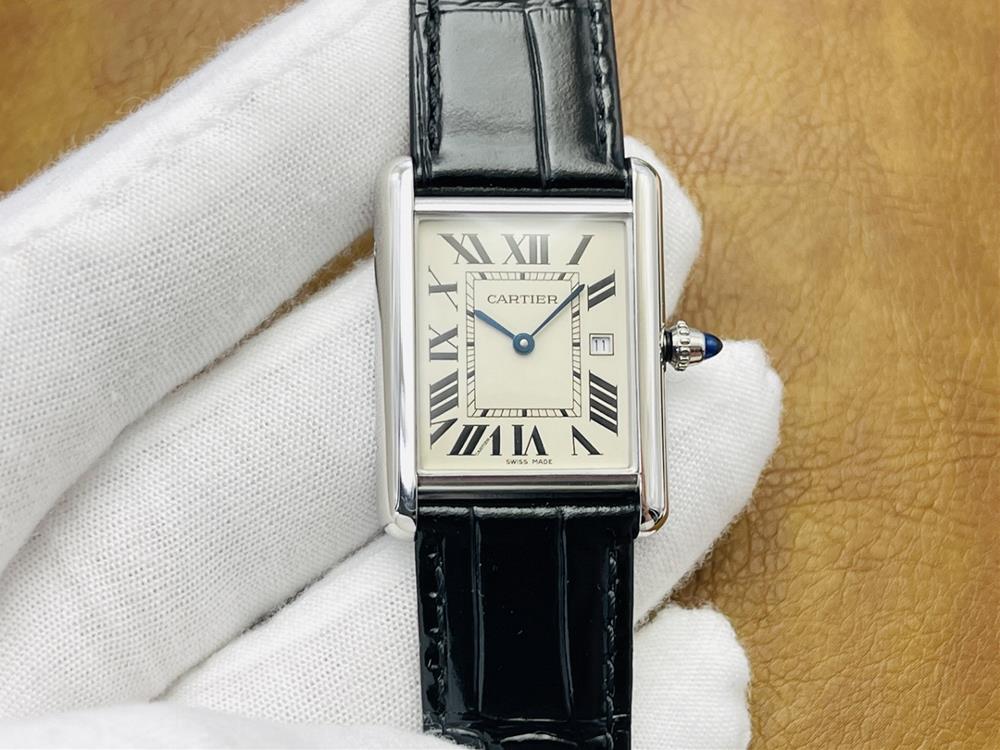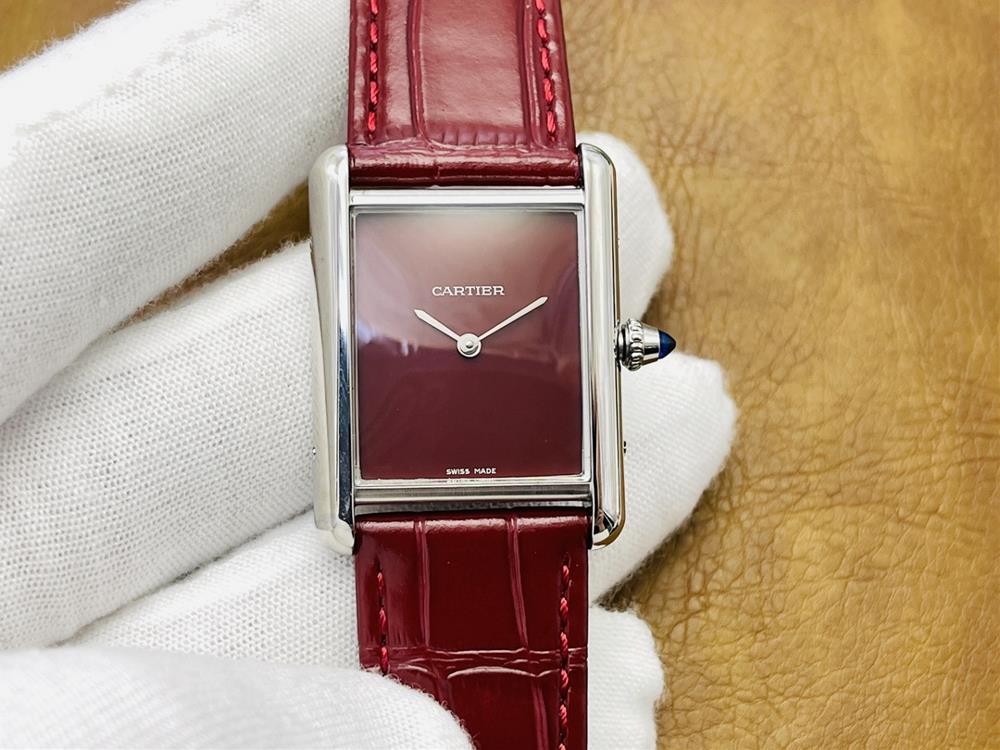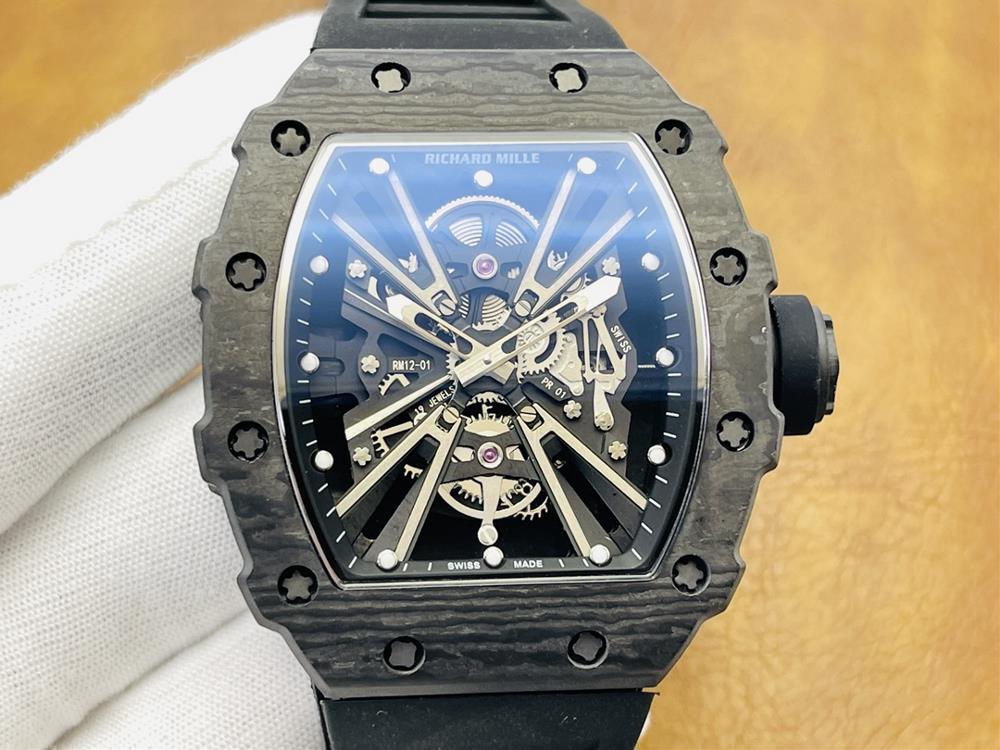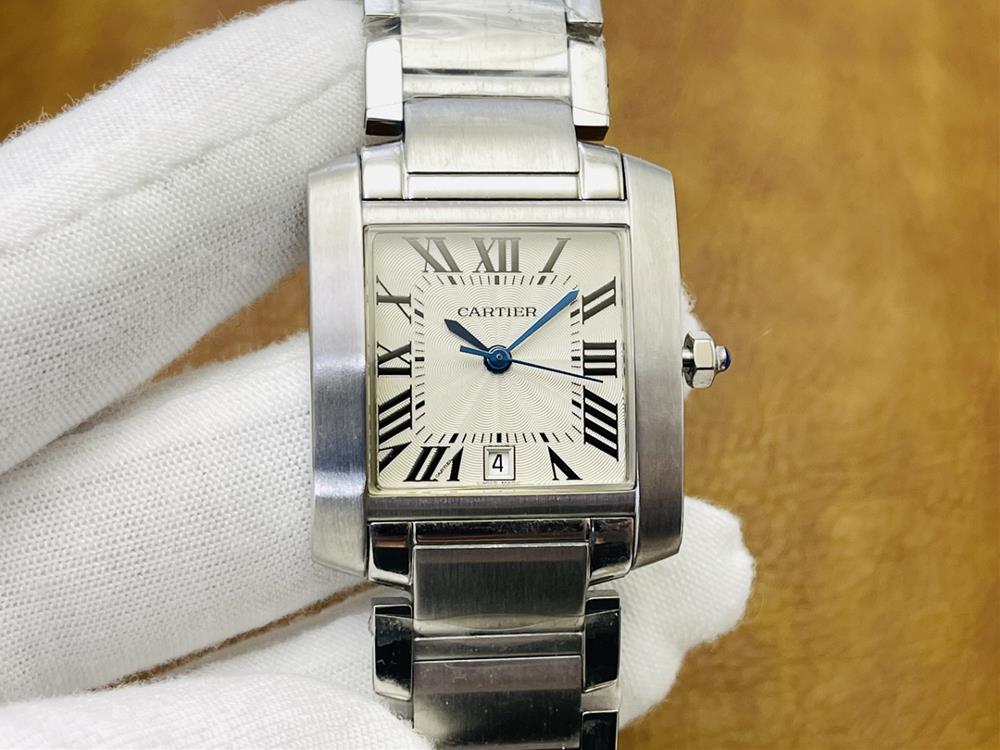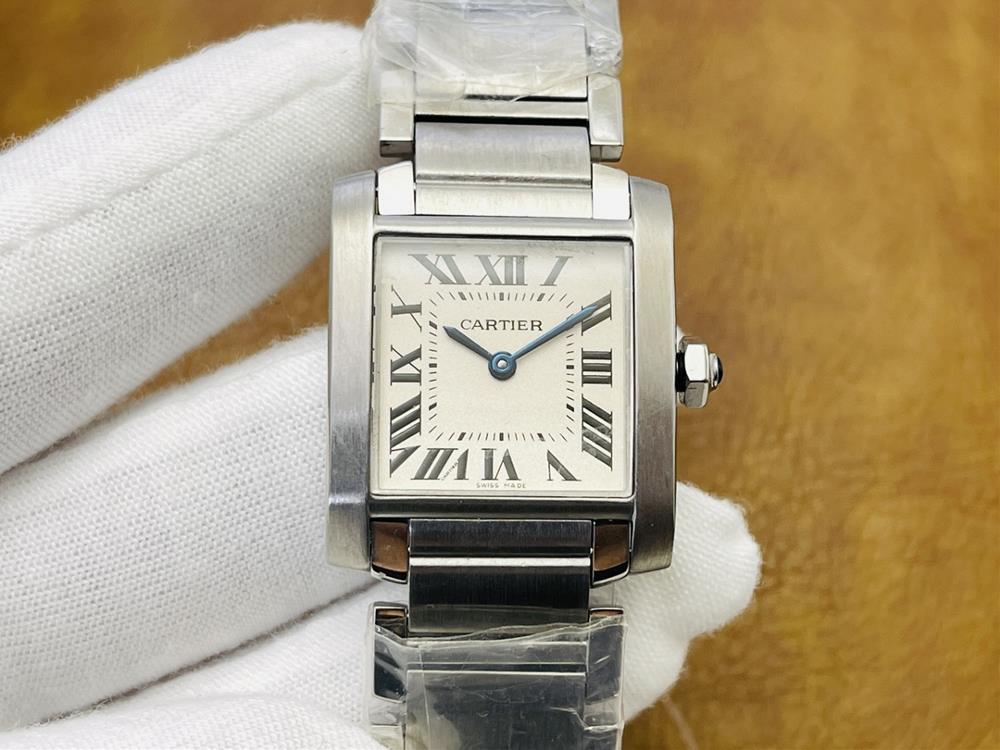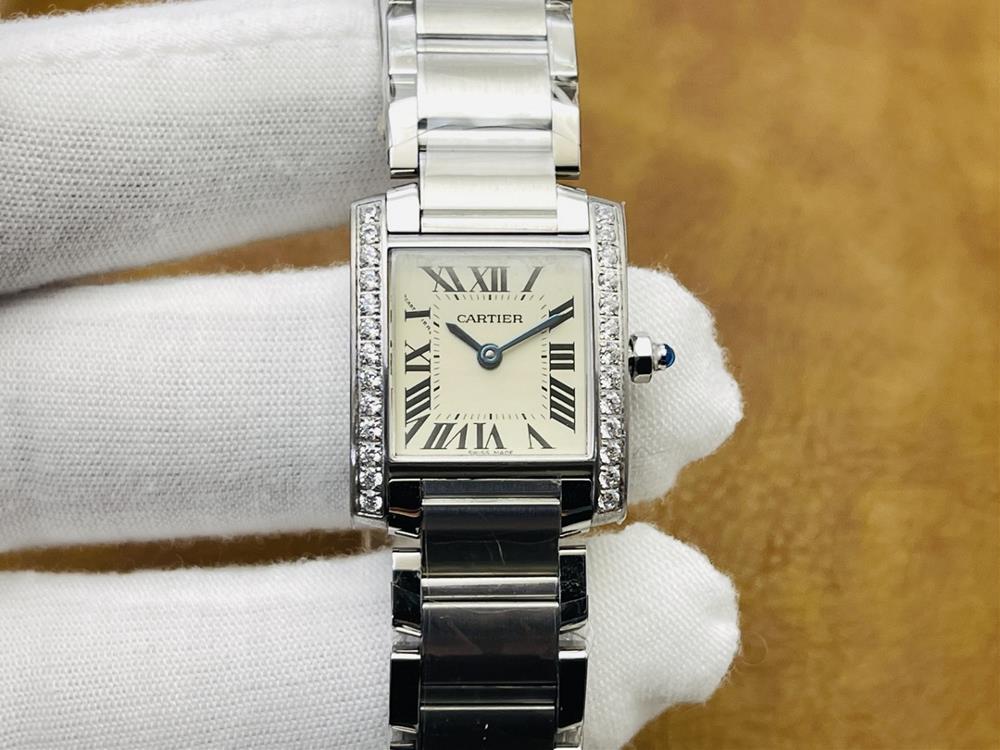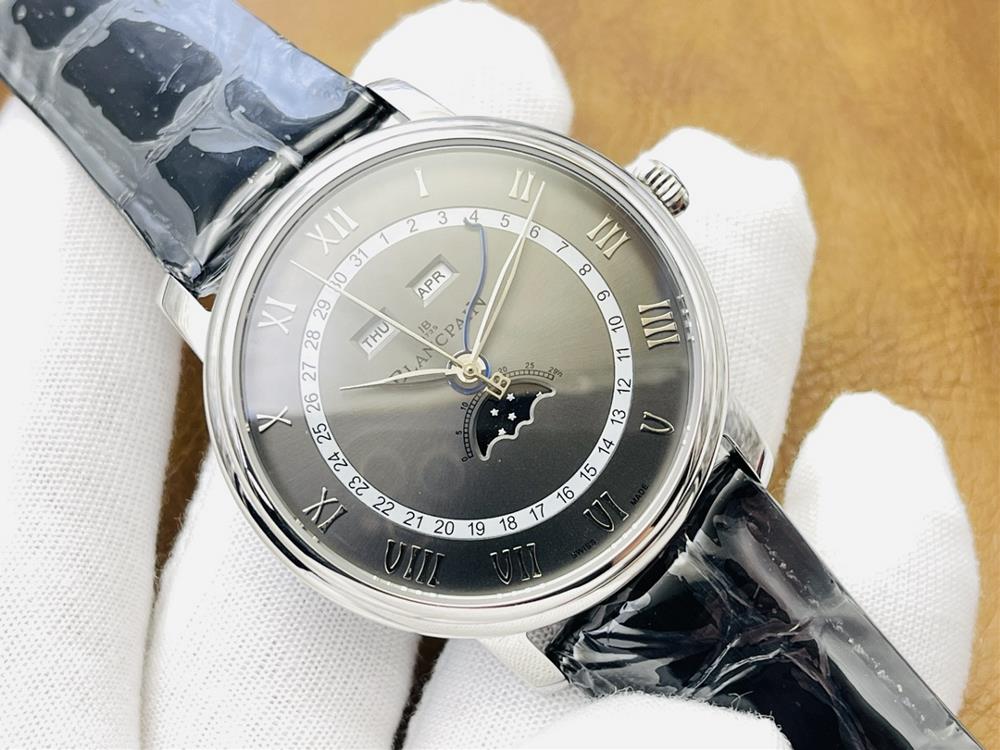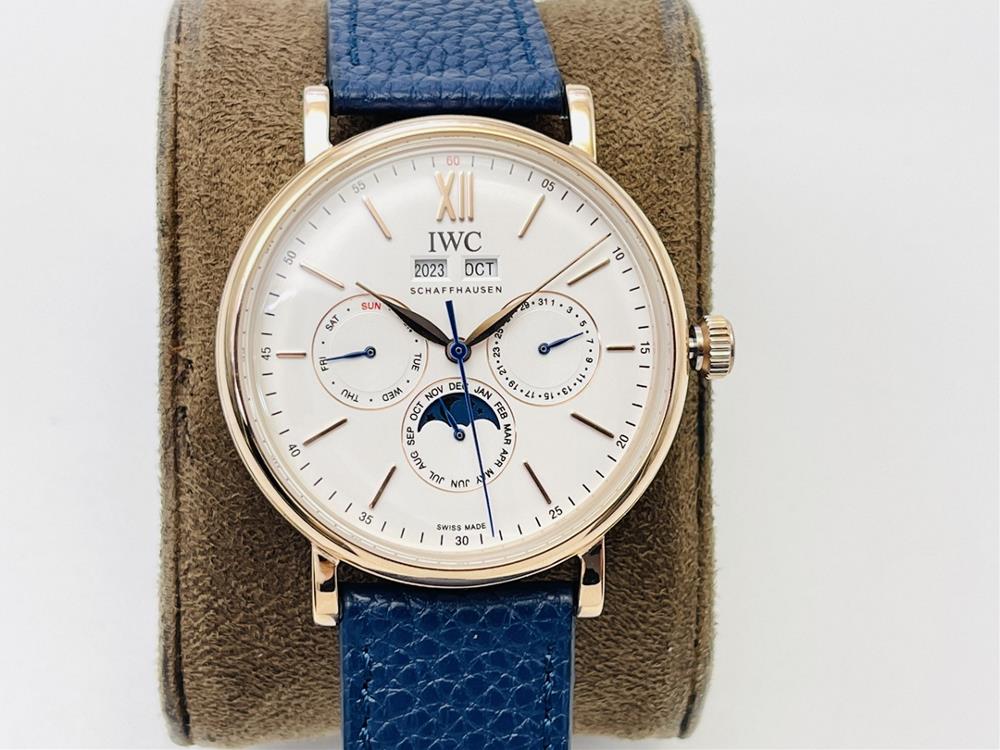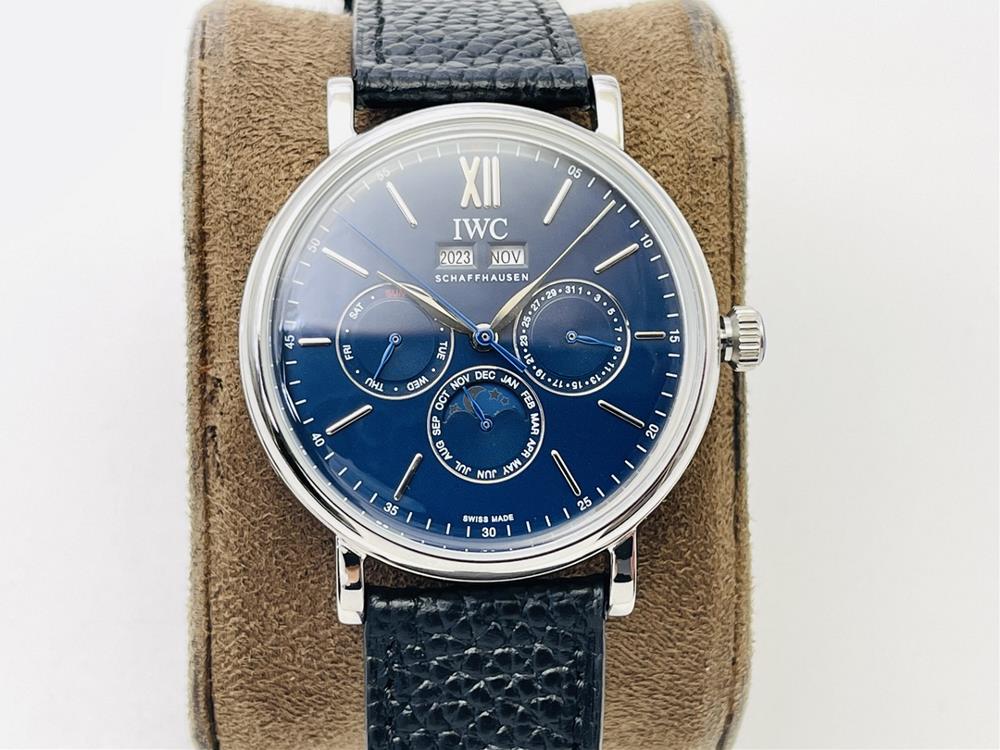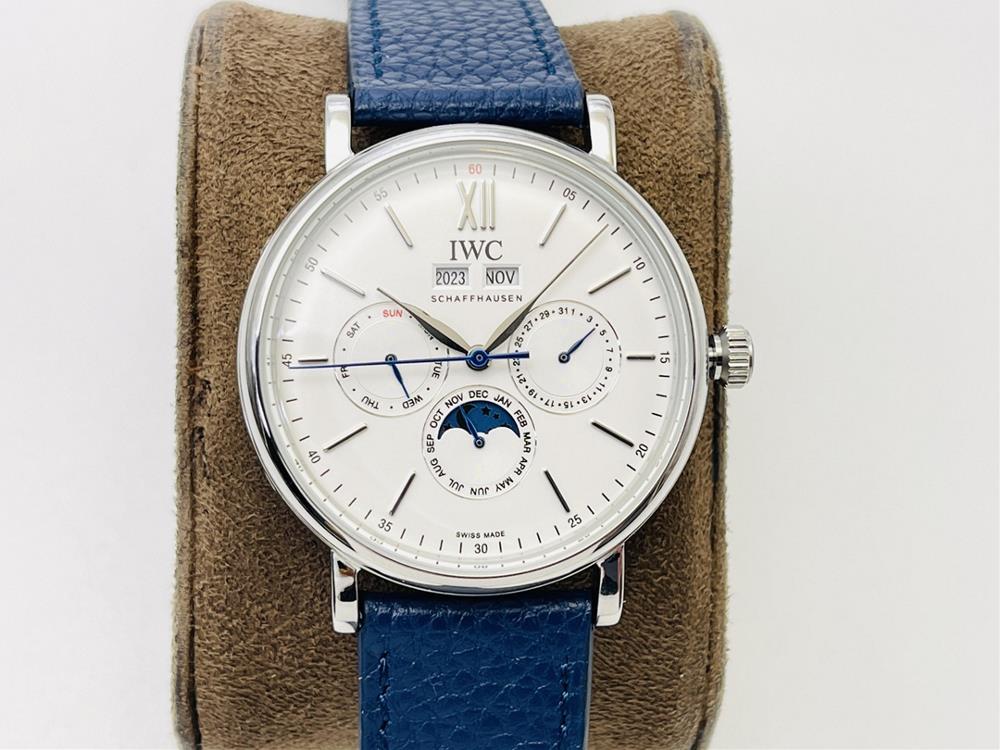which sells handbags, travel goods, small leather goods, accessories, footwear, ready-to-wear, watch
 Louis Vuitton is a French luxury brand, part of the LVMH Moet Hennessy Louis Vuitton Group, which sells handbags, travel goods, small leather goods, accessories, footwear, ready-to-wear, watches, fine jewelry and customized services.
Louis Vuitton is a French luxury brand, part of the LVMH Moet Hennessy Louis Vuitton Group, which sells handbags, travel goods, small leather goods, accessories, footwear, ready-to-wear, watches, fine jewelry and customized services.
In 1854, Louis Vuitton married and set up shop with his wife at Rue Neuve Des Capucines 4 (Rue des Capucines). Louis Vuitton made the crucial decision to cover one of its suitcases with a durable and waterproof canvas material after the company was founded. Louis Vuitton's son and son, Georges Vuitton, took over the business in 1880. In October 2013, Louis Vuitton creative director Marc Jacobs stepped down after 16 years. Louis Vuitton has appointed Nicolas Ghesquiere as its new creative director, succeeding Marc. Louis Vuitton officially opened its flagship online store in China on July 15, 2018.
In December 2018, Louis Vuitton ranked 34th in the 2018 Top 500 World Brands compiled by the World Brand Lab [1]. In October 2019, Interbrand ranked No. 17 on its Top 100 Global Brands list. [2] In July 2020, the Forbes 100 Global Brand Value 2020 was released, and Louis Vuitton ranked 9th.
In 1837, Louis Vuitton became a Laytie-Emballeur apprentice to Marechal, the luggage maker, as all the luggage makers were then known.
By 1853, Louis Vuitton had become the boss's chief assistant and the most trusted luggage expert of the Empress Eugenie. As soon as it became a royal fixture, fashionable guests from the upper classes began to pour in.
In 1854, Louis Vuitton married and set up shop with his wife at Rue Neuve Des Capucines 4 (Rue des Capucines). Louis Vuitton made the crucial decision to cover one of its suitcases with a durable and waterproof canvas material after the company was founded.
In 1858, Louis Vuitton introduced a new product -- a flat lid aspen suitcase for easy transportation. The surface of the suitcase is covered with high-quality gray waterproof Trianon canvas, the corners are wrapped with metal edges, and the overhand pull and bracket are installed. The beech strips on the surface are nailed with rivets. The interior design is equally thoughtful, with a series of bottom boxes and compartments to facilitate the display of various clothes and elegant lining.
In 1859, Louis Vuitton decided to move its production line to Asnieres, a suburb where Impressionist painters had not yet discovered it. The quiet town of Asnieres, on the banks of the Seine, is in a prime location: the cottonwood used to make suitcases can be transported by barge from the nearby Oise valley, and the town is connected by rail to Saint-Lazare station in Paris.
In 1871 the main Paris store was not enough, so it was moved to nearby One rue Scribe, opposite the famous Grand Hotel, before the completion of the theatre next door.
In 1872, Louis Vuitton added a red and white striped pattern to the grey Trianon canvas to combat the appearance of imitations on the market.
In 1880, Georges Vuitton, the son and son of Louis Vuitton, took over the company's business. Later, in 1888, a new pattern of more complex brown and white plaids was launched, and the logo L.Vuitton was printed step by step, which was hard for others to imitate. More than a century later, the chequered pattern inspired another classic, the Damier series.
George opened stores in New York in the late 19th and early 20th centuries. Many celebrities also make special trips to Paris to buy suitcases and bags. Bags and suitcases for various purposes have also been introduced.
With the popularity of Louis Vuitton bags, many fakes flooded the market. Louis Vuitton sued, but it did not stop the proliferation of counterfeits. Louis Vuitton and his descendants have a strong interest in the development of advanced things in the world as well as transportation, technology, architecture, art and fashion, and have a thorough observation of world things. Charles-Frederic Worth once pointed out to Louis Vuitton that the end of the broad skirt would soon be replaced by the light dress style. He immediately got the idea. In 1875, he created a two-sided upright opening wardrobe suitcase, with a hanger on one side and a row of drawers on the other. It allows passengers to travel from place to place without having to repack their clothes. The Wardrobe collection is still one of Louis Vuitton's most iconic pieces.
Louis Vuitton opened a store on London's Oxford Street in 1885.
Convinced of the potential of the American market, Vuitton signed a distribution agreement with John Wanamaker, the owner of a large department store chain, in 1898 to sell suitcases in New York and Philadelphia, and then to Boston, Chicago, Washington and Los Angeles.
In 1905, two years before Henry Ford introduced his Model car, the brand introduced a waterproof "driver bag" that could be hidden in the center of the back tire and used as a bath in case of need. In the earliest days of flight, the experimental "nacelle trunk" was indispensable. Even if there was an accident while landing on the water, the pilot of the spaceship would float on the trunk. Another masterpiece is the airy aero trunk, which weighs only 26kg when fully loaded.
Another major revolutionary invention was the unpickable lock, introduced in 1890 while George Vuitton was in charge of the company, which was installed on all suitcases made by the brand thereafter. And each guest is assigned a private lock number, that is, all the suitcases of the guest can be opened and closed with the same key. This system has been used ever since.
In 1912, as the commercial center of Paris was growing westward, Louis Vuitton decided to build a new art style building on the Champs-Elysees as its flagship store. The building was completed in 1914, with the inscription "Paris - Louis Vuitton, founded in 1845" on the exterior. The inscription on the wall of the original building, located just opposite the main store on the Champs-Elysees, is still visible. After the Second World War, demand for Monogram's canvas products increased, and the company decided to expand its exclusive global distribution network. The brand opened new stores with a very strict attitude, in keeping with the same philosophy of maintaining the perfect quality of its products.
In 1987, the brand merged with Moet Hennessy to form LVMH, the largest and most successful luxury group in the world.
Louis Vuitton operates more than 424 dedicated stores worldwide, all of which are directly managed by the parent company. During the same period, the brand expanded its range of products, starting with the brightly colored Epi leather collection in 1985, followed by the men's Taiga leather collection in 1993 and the Damier canvas collection in 1996. In the same year, Louis Vuitton celebrated the 100th anniversary of Monogram by commissioning seven famous fashion designers to create a limited number of Monogram handbags. The most unique design was Azzedine Alaia's Monogram with leopard skin. And Vivienne Westwood's faux cul travel bag.
In 1996, Louis Vuitton joined Moet Hennessy Louis Vuitton (LVMH), greatly expanding its footprint. It not only produces a large number of traditional high-end luggage products, but also engages in fashion, watches, jewelry and other industries. Its business activities alone account for 70% of the total business volume of the group.
In 1998, Louis Vuitton became a full-fledged fashion house with the establishment of men's and women's ready-to-wear and footwear, accessories and jewelry departments, and the appointment of New York-based designer Marc Jacobs as artistic director. At the time, the fashion world was surprised to see the arrival of "grunge master" Marc Jacobs in the French palace, but after a few years of working together, the two seemed to be in perfect harmony. Marc Jacobs cooperated with New York avant-garde artist Stephen Sprouse to create Monogram Graffiti, and created Eye Love Monogram and Color Monogram with Japanese artist Takashi Murakami Multicolore and Monogram Cerises Cherry series.
In 2004, the sixth generation of Louis Vuitton, Patrick Vuitton, now employs 13,600 luggage makers in 14 workshops, including 11 in France, Catalonia in Spain and California in the US. 80% of the work involved in making bags and suitcases is done by hand. Louis Vuitton also has 314 luggage stores in 52 countries, including nine in China alone. In 2002 its turnover was 3 billion euros, a figure that has more than tripled in 10 years. Profits have been growing by 40-45 percent year after year. Japan is a big seller of Louis Vuitton products, accounting for 30 percent of its sales. On the day a Tokyo branch opened in 2002, the line at the door stretched for a kilometre. The second big seller is the United States.
In 2004, Louis Vuitton celebrated its 150th anniversary by erecting giant luggage pavilions as party venues in New York, Hong Kong, Tokyo and Shanghai in honor of the brand's founder. The brand has also opened large flagship stores in India, Russia, China, and South Africa. The historic Champs-Elysees headquarters reopened in October 2005 after a complete renovation.
Former Soviet President Mikhail Gorbachev appeared in a Louis Vuitton handbag AD in August 2007. [5]
In October 2013, Louis Vuitton creative director Marc Jacobs stepped down after 16 years. Louis Vuitton has appointed Nicolas Ghesquiere as its new creative director, succeeding Marc.
The arrival of Louis Vuitton's official online flagship store in China on July 15, 2018 means that consumers in other cities across the country will also be able to enjoy the brand's premium "shop" services, including delivery services and a 7-day return policy, which were previously only available in 12 major cities including Beijing, Shanghai, Chongqing and Guangzhou. [6]
On August 31, 2021, a hashtag "LV bicycle costs 200,000 yuan" hit Weibo. Each bike, regardless of size or color, costs 200,000 yuan and was created in collaboration with Parisian bike maker Maison TAMBOITE Paris, according to LV's website. [17]
On November 28, 2021, Virgil Abloh, the Louis Vuitton menswear designer and founder and CEO of Off-White, died of cancer at the age of 41, according to reports on CNN.com, Yahoo News and others. [21]
On September 7, 2022, Louis Vuitton announced that Bradley Cooper would be the face of the brand and star in the 20th anniversary AD special for Tambour Watch. [22]
The Louis Vuitton logo is derived from the full name of the brand founder Louis Vuitton, which is the full name of the founder to create the first generation of LV pattern. Since then, the pattern of capital letter combination LV has been the symbol of LV leather goods. Monogram was created six years after Louis Vuitton was founded. When Vuitton decided to give the brand a consistent identity, it spent weeks sketching the motif. At a time when Japanese aesthetics were in vogue in Europe, the final design he chose also bore a deep hint of the traditional Japanese emblem: a circular four-leaf flower, a four-pointed star, a concave diamond with a four-pointed star inside, and a Monogram of overlapping Louis Vuitton (abbreviated Louis Vuitton). Louis Vuitton registered Monogram canvas design in 1897 and registered it as a brand name in 1905.

